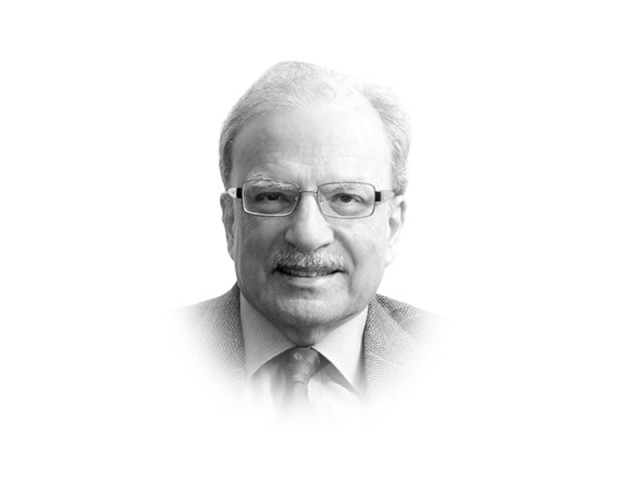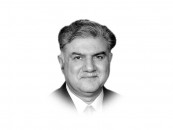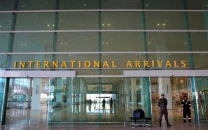How India – and Pakistan – likely to fare in the new world order
The first set of orders imposed tariffs on imports entering the country.

Donald Trump returned to the White House for a second term on January 20, 2025. He assumed the presidency with a pledge to remake the world order so that America would once again emerge as the dominant global power. He declared that he needed to act as a dictator for just one day - during which he would issue dozens of executive orders that, in his view, would bypass congressional approval. And he kept his word.
The first set of orders imposed tariffs on imports entering the country. The second wave targeted immigrants, including those who had arrived legally. The proposed tariffs were based on a formula that linked punitive taxes to the United States' bilateral trade deficits in goods with individual countries — in other words, the extent to which the US imported more from those countries than it exported to them.
The calculation involved determining the ratio between the US trade deficit with a country and that country's total exports to the US. This ratio was then halved to produce what the administration termed a "discounted reciprocal tariff."
Economists were critical of the assumption behind the calculation for a number of reasons. They noted that the formula excluded services — which constitute the majority of the US economy and a significant portion of its exports — from the trade deficit calculations. This omission, they argued, rendered America's trade relationships with its partners inaccurately one-sided. The Trump Administration "has an indefensible foundation to an indefensible policy," said Douglas Holtz-Eakin, the President of the Conservative American Action Forum.
The United States Census Bureau published data for 20 countries, with the first column indicating each country's trade deficit with the US as a percentage of its exports to the American market. Cambodia topped the list, with a deficit amounting to 98% of its exportsmeaning it would face a 49% tariff under the administration's formula. Vietnam followed with a 46% tariff. India, ranked seventh, faced a 24% tariff. At the bottom of the list were eight countries, each subject to a 10% tariff. Among these low-tariff nations were Singapore, the United Kingdom, and Brazil.
An important comment on the situation created by the Trump policy was made by Maury Obstfeld, a senior fellow at the Washington-based Peterson Institute for International Economics. He said the new system will just reshuffle US trading relationships "in ways that are particularly injurious because they basically penalize trade in the areas where it's of most value to us [the US], and without mitigating the perceived problem that overall the country has a deficit with the rest of the world."
According to Holtz-Eakin, the policy adopted by Trump is to give him the opportunity to make deals that he takes pride in executing: "Trump probably likes that way, because then it all comes down to a negotiation with each county. That appeals to him, but it is a terrible policy for the global trading system."
India stands to benefit - albeit indirectly — from the reordering of global trade. Some shifts are already underway. For instance, Apple, the American tech giant, designs its devices at a center in California, but manufacturing has traditionally been outsourced to a Taiwanese company operating in southern China. Under the new tariff regime, exports from China would face a 34% tariff - eight percentage points higher than India's 26% - potentially making India a more attractive alternative for production.
Apple has announced that it will join the trend and relocate its assembly plant from south China to India. As of 2024, India hosted approximately 1,800 offshore corporate offices, owned by hundreds of multinational companies — most of them American. There are 1.9 million people in India working for foreign companies - with 600,000 to 900,000 more expecting to join in 2025-26. The model for foreign companies operating in India has existed since at least the 1990s, when international firms began setting up operations, drawn by a well-educated middle class willing to work long hours for relatively low wages.
American companies are now re-assembling their forces because it has become difficult to find the right kind of workers in their own country. Studies find that one-third of all new engineering jobs go unfilled, while nearly 1.2 million Indians graduate with engineering degrees every year. They are available to work in foreign companies especially when jobs are not available in domestic enterprises.
Deborrah Kops, Managing Principal of the American firm Sourcing Change, has long been involved in relocating enterprises from the US to countries like India, capitalizing on the ready availability of skilled, hardworking labor willing to work for a fraction of the salaries demanded by their American counterparts. According to her, "[The US has] got an inexorable trend right now, where enterprises understand that you can globalize work."
Kops has attempted to establish global centers within the US, but says it is difficult to find a sufficient number of well-trained engineers. "Can you get 5,000 folks who know how to do this kind of work?" she asked. "You can'tbut you can do it in India, and you can do it in some other places in the world."
Demography is playing a big role in this relocation of work in the world. With rates of human fertility falling well below the replacement level of 2.1 children per woman, all Western nations are experiencing declining populations. This demographic shift leads to an increase in the proportion of old people. However, it is the youth are needed to provide trained workers who have acquired news skills.
In addition to the West, China is also faced with the demographic challenge of below replacement level fertility and an aging work force. Yet, China has the declared ambition to become the leading nation in new technologies such as AI. Here Pakistan can be of help with one of the world's youngest populations. It could team up with China and have them set up training institutions on the main highways that are close to the Chinese borders.
Lahore-Islamabad and Sialkot-Islamabad motorways would be the ideal locations where China could set up institutions and have young people graduate in science and technology. Once they have been trained, they could work for China on the various high-technology products it is developing.















COMMENTS
Comments are moderated and generally will be posted if they are on-topic and not abusive.
For more information, please see our Comments FAQ